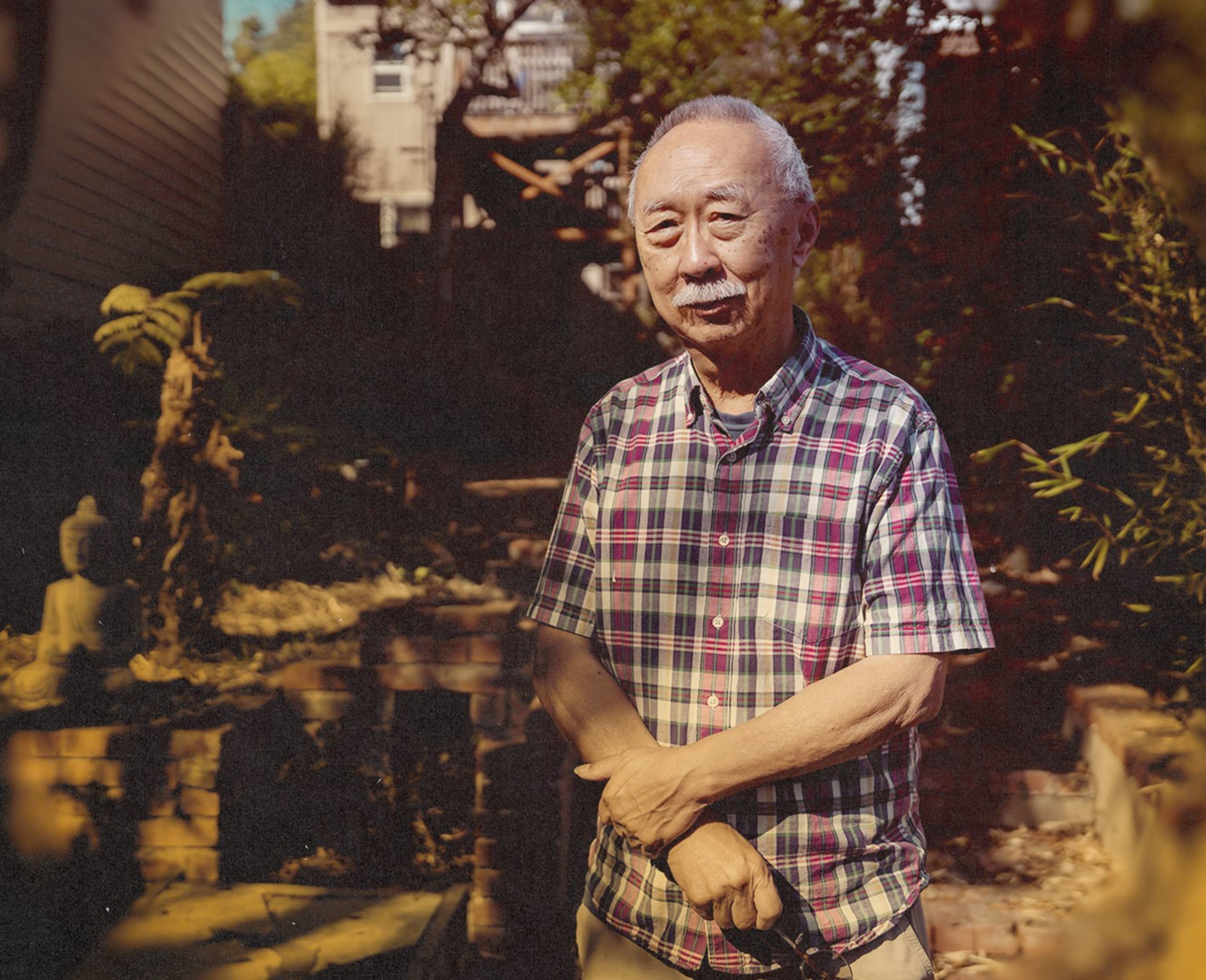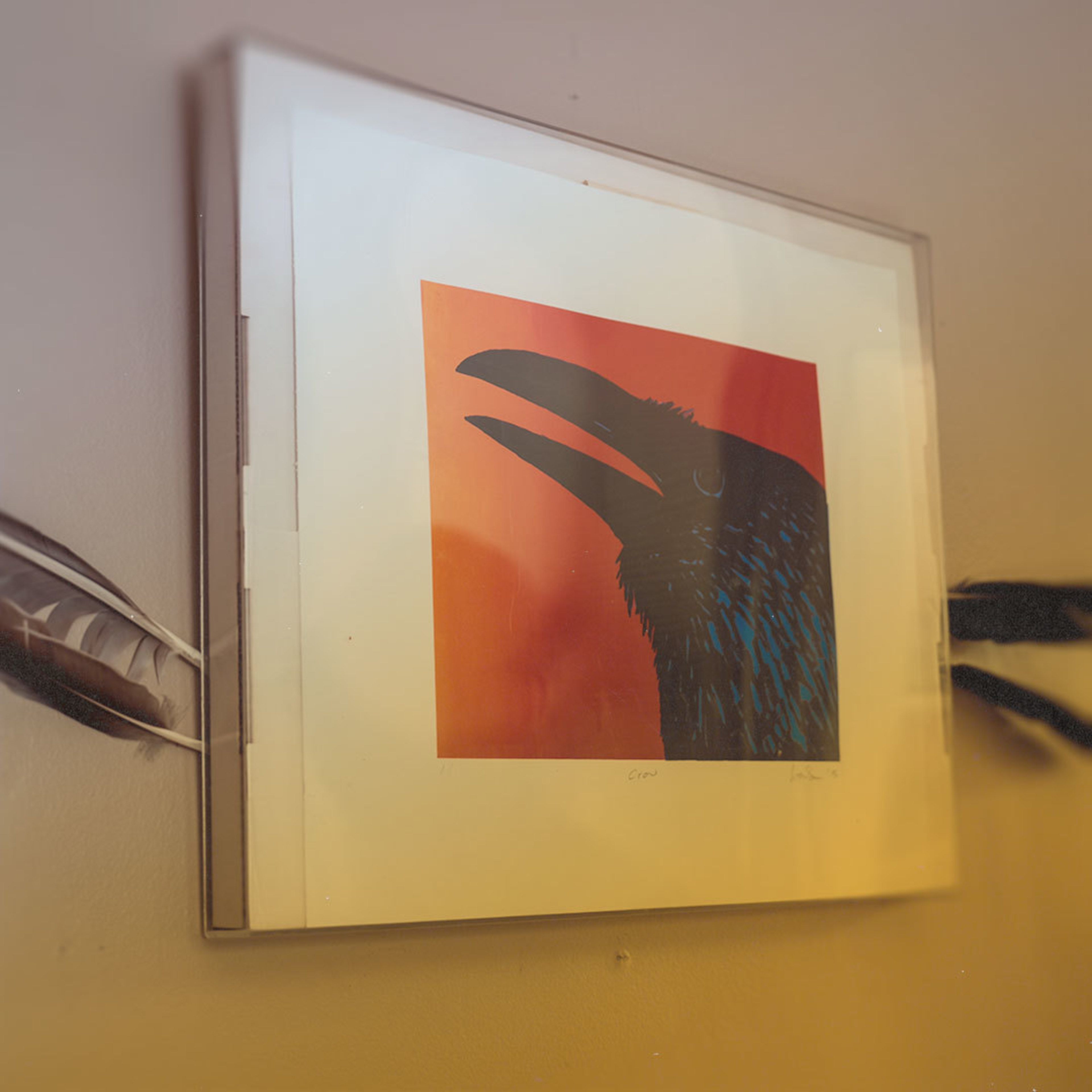Skip to main content








Know Your Neighbors
Leon Sun
Preserves SF’s Asian American Heritage Through Silkscreens and PhotographsWritten by Olivia Cruz Mayeda
Published Oct. 23, 2022 • 2:05pm
Leon Sun has been a silkscreen printmaker for 43 years. His work is a visual repository for the history of San Francisco’s Asian American Movement, the people who lived it and his own evolving relationship with what it means to be Asian American.
“That moment was crucial for me because a lot of people were taking stands against imperialism,” said Sun. “To see Asians stand up that way and be fierce and unafraid to state their politics was moving to me.”
An immigrant from Hong Kong, Sun came to San Francisco in 1969 with little savings after attending college in Michigan. When he stumbled into San Francisco Chinatown a few months after arriving, he decided to stay.
Most weekends, you can find the 74-year-old Sun meditating in the shade of the Zen garden at his home on Turk Street, where he’s lived for more than 30 years. Incense smoke swirls around his still form and nearby ferns.
“I discovered the relationship between Buddhism and silkscreen printing over time,” Sun said, reflecting on the intersection of his artistic practice and his spirituality. In his early days making prints, he lacked patience. “I learned to slow things down and enjoy every part of the process.”
Sun first learned how to make silkscreen prints at the now-defunct Japantown Art and Media Workshop in San Francisco during the height of anti-war protests in the early ’70s. The workshop was housed in a condemned Victorian on Sutter Street that the city let JAM rent for $1 a year. He printed posters for leftist causes and other organizations while at the workshop.
Looking back on what drew him to JAM and progressive politics, he recalls the racism he experienced when he first moved to Michigan from his native Hong Kong. That deeply affected him.
“The movement gave me my identity and my life meaning and focus,” Sun said at the opening night of “Back to the Culture,” his new show now on display at the Peace Gallery in San Francisco Japantown.
Sun also worked in San Francisco as a photojournalist, covering everything from political rallies to the daily lives of Black, brown and Asian people. Some of his film negatives are housed in Stanford University’s archives.
At the Vietnam War Moratorium in 1972, Sun documented protestors marching in downtown San Francisco. He took a photo of a young woman in the march, who he wouldn’t see again for another 10 years. The two are still married.
“Destiny, you know?” Sun said, smiling.
Sun said he wanted to represent a working class perspective on love through printmaking. In 1986, he created “Cane Cutters,” a print depicting an older Asian American couple working in a sugarcane field under a shimmering crescent moon. The print is based on a poem by Juliet Kono that represents resilience and quiet, grounded love to Sun.
In his recent prints, Sun celebrates the natural world. When he was a kid and still living in Hong Kong, his father told him that Chinese paintings didn’t try to replicate reality. Instead, they sought to capture the emotion of an experience. Sun upholds that philosophy many decades later. His deep reverence for the natural world gives his images a dreamlike quality. His prints feature whales, crows and bluejays in bold flats of color, giving each being an almost mythological aura.
“I’m asking what it means to look at animals as relatives,” Sun said. “You have to look at them with compassion and gratitude. I try to take my ego out of it and keep it simple.”
‘Back to the Culture’ is showing at the Peace Gallery located at 1684 Post Street until December 31st. | Photos by Michaela Vatcheva.

Special powers
Creating art.
Arch enemies
Aging and forgetfulness.
Weaknesses
Cronuts.
Lineage
Chinese.
Current mission
To be happy and make my friends happy.
'I discovered the relationship between Buddhism and silkscreen printing over time. I learned to slow things down and enjoy every part of the process.'
